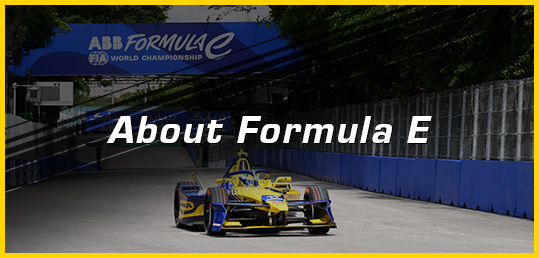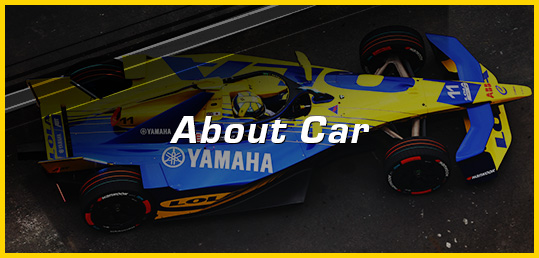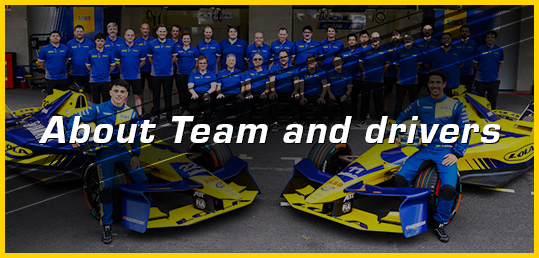About Formula E
Introducing the activities of the Lola Yamaha ABT Formula E Team, which competes in Formula E, the pinnacle of electric formula car racing.
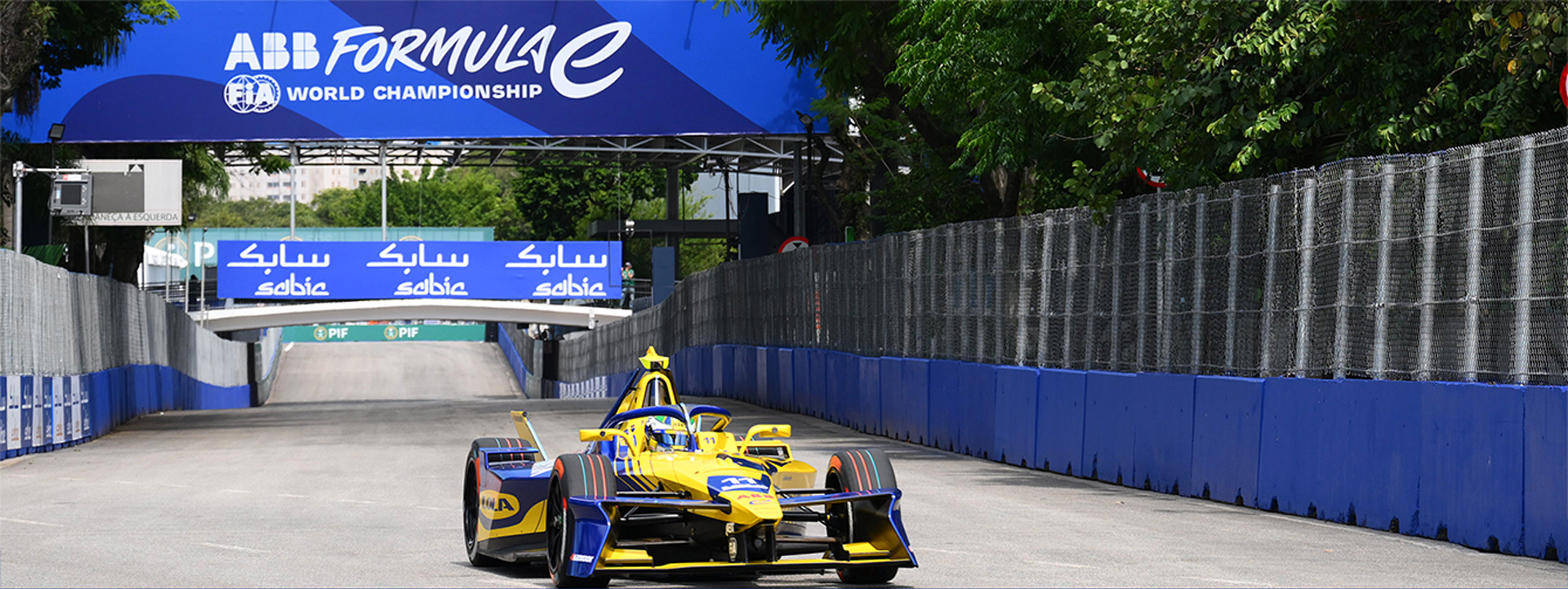
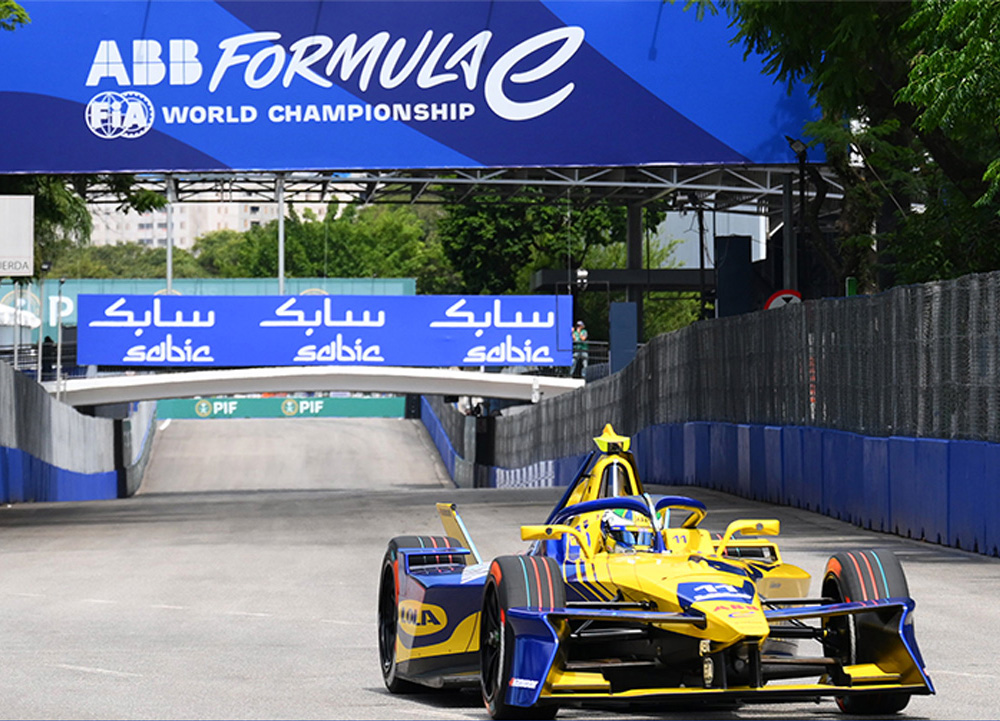
Formula car race
organised by the FIA,
also known as the
'F1 of electric cars'
Sustainability is a
core principle, with the aim of
minimising
environmental impact
(regenerative braking, usef
orenewable parts, etc.)
Startup culture
(proactive new initiatives)
First held
in September 2014,
latest season is 12
(2025/2026)
A one-make race
in which the basic body
and performance
specifications are the
same for all teams
The differences
between the teams' cars are
in the powertrain,
software
and rear suspension
TThe battery capacity
for the main race is
of the race half
the amount needed to run
at full throttle.
Energy management
Formula E
This is a racing series for battery-powered electric cars that has been held since 2014 by the FIA (International Automobile Federation), which also organises F1, the WEC (World Endurance Championship) and the WRC (World Rally Championship). It is commonly known as the E-Prix.
It is a one-make race in which the basic body and performance specifications are the same for all teams. The use of common parts ensures fairness in the race, and each team is required to focus on other technologies and strategies.
The motors for the front and rear drive generate electricity through regeneration during braking to make up for any shortfall in energy. Energy management is also an important element of the race, such as the existence of an 'attack mode' that maximises the performance of the machine instead of consuming a lot of electricity.
The Official Website of the ABB FIA Formula E World Championship
Time and place of the event
The season begins in December each year and continues until the following summer.
The current season is Season 12 (2025/2026).
Many races are held on urban courses in major cities around the world, and the event also aims to promote measures to combat air pollution in urban areas and the spread of electric vehicles. It is also quiet, so quiet that you can have a quiet conversation in the pit, and you don't even need a headset.
The first time the event was held in Japan was in March 2024 (Season 10). The third time it will be held in 2026. The venue will be the Tokyo Street Circuit, a temporary circuit using the grounds of the Tokyo International Exhibition Centre (Tokyo Big Sight) and the surrounding roads, and will be a full-scale public road car race.

Time and place of the event
The season begins in December each year and continues until July of the following year.
The current season is Season 11 (2024/2025).
Many races are held on urban courses in major cities around the world, and the event also aims to promote measures to combat air pollution in urban areas and the spread of electric vehicles.
The first time the event was held in Japan was in March 2024 (Season 10). The second time it will be held in 2025. The venue will be the Tokyo Street Circuit, a temporary circuit using the grounds of the Tokyo International Exhibition Centre (Tokyo Big Sight) and the surrounding roads, and will be a full-scale public road car race.

Car
Feature 01:
The chassis, body, battery, regenerative motor, front brakes, front suspension and tyres are all the same, with the functions and performance changing with each generation.
GEN1 :
Season 1 (2014/2015) - Season 4 (2017/2018)
GEN2 :
Season 5 (2018/2019) - Season 8 (2021/2022)
GEN3 :
Season 9 (2022/2023) - Season 10 (2023/2024)
GEN3 EVO :
Season11 (2024/2025) - Season 12 (2025/2026)
The parts that each team can work on are limited to the powertrain (power unit), software and rear suspension.
Feature 02:
The latest Formula E car, the GEN3 EVO. With a system output of 350kW and four-wheel drive*, it achieves 0-60 mph (0-96.5 km/h) acceleration in just 1.82 seconds. Its acceleration is so fierce that it outperforms current F1 cars.
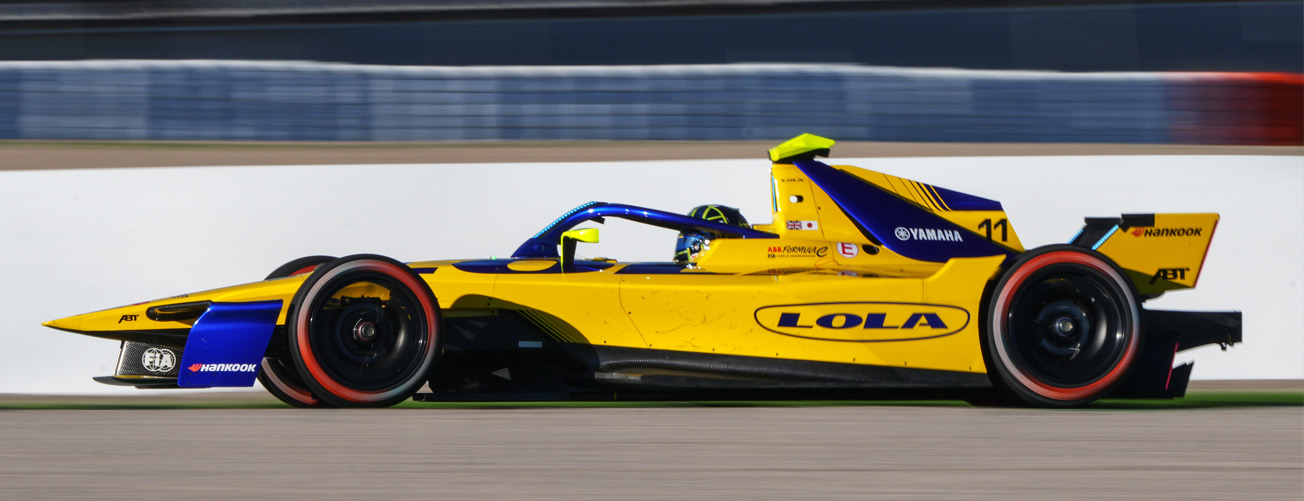
| GEN1 | GEN2 | GEN3 | GEN3 EVO | |
|---|---|---|---|---|
| Max. speed | 140mph (225km/h) | 174mph (280km/h) | 200mph (322km/h) | <- |
| Max. output | 190kW (255HP) | 250kW (335HP) | 350kW (469HP) | <- |
| Min. weight*1 | 920kg | 900kg | 840kg | 859kg |
| Powertrain | Rear | Rear | Front & rear | AWD*2 |
| Battery | Half | Full | Fast charging | <- |
- *1
- Min. weight: Weight including driver
- *2
- AWD: All-wheel drive. AWD can be used in Duels and Race Start, Attack Modes.
Highlights
Amazing acceleration
The GEN3 EVO achieves 0-60 mph (0-96.5 km/h) acceleration in just 1.82 seconds when using All Wheel Drive*. This is faster than the current F1 cars.
- *
- The front motor of the GEN3 was solely for regenerative braking and could not be used for four-wheel drive.
Highlights of the qualifying round
The qualifying round consists of a group stage, in which the drivers are divided into two groups according to their rankings, and a knockout-style 'duels' round, in which only the top four cars from each group stage advance to the final. In the group stage, the system output is limited to 300kW and rear-wheel drive. In the 'duels' round, however, the cars can use their maximum performance of 350kW and four-wheel drive. The settings required for the cars are different, so it is important to set up the car in free practice. Qualifying is more exciting and strategic, making it a worthwhile event for spectators.
Highlights of the final
The existence of 'Attack Mode' and 'Pit Boost' means that it's not just about being quick, but also requires each team to have a strategy.
- 'Attack Mode'
The final race is restricted to “300kW system output and rear-wheel drive”, but passing through the “activation zone” – which lies outside the normal racing line – temporarily boosts the machine's output to “350kW system output and four-wheel drive”. Deviating even slightly from the activation zone carries the risk of losing track position without gaining the power boost, but success affords the driver an overtaking opportunity.
TAttack Mode can be used once in races with pit boosts and twice in races without pit boosts. The obligation to fully utilise the designated Attack Mode time, which applied in Season 11, has been abolished. Deciding when to use it requires strategy, considering battery conditions (such as temperature) and the movements of other teams.
- 'Pit Boost'
All drivers are required to complete a 34-second pit stop, during which 30 seconds must be used for a 600kW rapid charge to add 10% (3.85kWh) of energy. This applies to one race during a double-header event (two races held at the same venue).
Drivers and teams must assess the advantage gained from the 10% energy boost against the risk of temporarily dropping positions during the pit stop, deciding during the race when to use the pit boost at the optimal moment.

